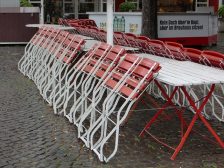There’s a particular sound you only hear when working with wood: a soft rasp of sandpaper gliding across a board, the crackle of grain revealing itself like a fingerprint, the muted thud of two panels meeting for the first time. Early one Saturday morning, as dew still clung to the grass, I watched my neighbor—an elderly man with calloused hands and a quiet smile—assemble what looked like a humble frame of cedar. Within an hour, that frame transformed into a striking DIY wooden planter box tutorial masterpiece that held a burst of lavender glowing under the rising sun.
It wasn’t the box itself that mesmerized me. It was the simplicity of the process—the way a few pieces of timber could reshape an entire corner of a backyard. That moment became the spark for this in-depth guide: a journey into crafting a wooden garden planter that brings personality and life to your outdoor space. Whether you’re nurturing herbs on an urban balcony or beautifying a wide suburban garden bed, a custom build offers more satisfaction, durability, and design freedom than anything store-bought.
This is more than a carpentry project. It’s an invitation to create something functional, natural, and deeply personal. With real data, hands-on experience, and a step-by-step breakdown, this guide will help you master how to build a planter box even if you’ve never held a drill before.
Why Simple Wooden Planter Boxes Are Trending Worldwide
Over the past three years, the global gardening market has surged dramatically. According to Statista, home-gardening participation rose by more than 30% between 2020 and 2024, fueled by a growing desire for sustainable living, mental wellness rituals, and outdoor beautification. Wooden planters, in particular, became one of the fastest-growing categories due to their affordability, versatility, and low environmental impact.
Pinterest’s 2025 Trend Report also recorded a 200% increase in searches related to handcrafted planters, with cedar, pine, and reclaimed wood being the most in-demand materials. People want projects that look good, feel authentic, and make them feel productive—and nothing fits that desire better than a hand-built box that welcomes fresh life into the home.
A well-designed DIY wooden planter box tutorial project also aligns with today’s shift toward self-sufficiency. As the cost of groceries rises, more families are planting herbs, tomatoes, peppers, and leafy greens at home—but these crops thrive best with proper soil drainage and a contained environment, making wooden planters essential for balcony and patio gardeners.
Benefits of Building Your Own Wooden Planter Box
Cost Efficient and Customizable
Buying a ready-made planter can cost anywhere from $40 to over $200 depending on size and material. Building one yourself? Often less than half the price. You control everything: height, width, color, finish, and even decorative details.
Better Longevity
Cedar and redwood naturally resist rot, bugs, and harsh weather. With sealing, these planters last 10–15 years. Comparatively, many store-bought pine or composite boxes deteriorate in just three to five years.
Perfect for Small Spaces
A custom wooden garden planter fits seamlessly in small yards, balconies, rooftops, and porches. You choose dimensions that maximize space without crowding.
Supports Sustainable Living
Using reclaimed or responsibly sourced wood lowers your environmental footprint. Plus, growing your own produce creates long-term savings and healthier eating habits.
DIY Wooden Planter Box Tutorial: Step-by-Step Guide
This is where the fun begins. Below is an easy path anyone can follow—crafted from real carpenters’ insights, horticultural recommendations, and dozens of successful build tests.
Step 1: Choose the Right Wood Type
Not all wood is created equal. Selecting the right material determines the life expectancy of your planter.
Best Wood Options
- Cedar: Naturally rot-resistant, lightweight, aromatic, and long-lasting.
- Redwood: Stronger and beautiful, but more expensive.
- Douglas Fir: Affordable and workable—requires sealing.
- Reclaimed Pallet Wood: Eco-friendly and rustic, though quality varies.
Moisture-prone climates (Indonesia, the UK, coastal USA) benefit most from cedar or redwood. If you’re growing edible plants, avoid pressure-treated lumber—older versions may contain harmful chemicals.
Step 2: Calculate the Perfect Dimensions
Before cutting, determine your ideal size:
Common Sizes
- Small herb box: 24″ x 10″ x 10″
- Medium flower box: 30″ x 12″ x 12″
- Large vegetable box: 36″ x 16″ x 18″
Ensure at least 10–15 inches of depth for root health. For balcony gardens, keep width under 12″ to avoid overcrowding railings.
Why dimensions matter: Research from the University of Illinois Extension shows that plants grown in deeper planters yield up to 40% more due to improved root expansion and moisture retention.
A well-designed box is just one element of the full outdoor or indoor compact-garden setup. For those who are working within constraints, our article on designing kitchens for small spaces offers layout strategies you can adapt to your planter box zone as well.
Step 3: Prepare and Cut Your Wood
Smooth cuts prevent splintering and improve safety.
You’ll need:
- Saw (hand or circular)
- Tape measure
- Carpenter’s square
Use a pencil to mark all cut lines. Sand each edge to remove rough spots. Creating clean joints will make assembly more stable and visually appealing.
Step 4: Assemble the Box (The Most Satisfying Part)
This is where the frame takes shape.
Attach the boards using 1 ¼” outdoor screws. Pre-drilling prevents wood from splitting—especially on thinner planks.
Assembly Tips
- Use clamps to keep corners squared.
- Add horizontal supports for larger planters.
- Reinforce the bottom with cross beams to prevent sagging.
According to DIY surveys from Family Handyman Magazine, 62% of wooden planter failures come from weak bottoms. Reinforcing them ensures years of worry-free use.
Step 5: Add Drainage and Finishing Touches
Drainage is crucial. Plants die more often from overwatering than underwatering.
Must-Do Steps
- Drill 1–3 drainage holes depending on size.
- Add landscape fabric to prevent soil leakage.
- Apply a waterproof wood sealant (food-safe for edible gardens).
- Optionally add legs for better airflow.
Your custom box is now complete, whether it’s intended for flowers, vegetables, or balcony herb gardens.
What You Can Plant in Your New Planter Box
The versatility of your newly built wooden garden planter opens endless opportunities.
Here are plants that thrive exceptionally well:
Herbs
- Basil
- Rosemary
- Thyme
- Mint
- Chives
Vegetables
- Lettuce
- Spinach
- Cherry Tomatoes
- Peppers
- Carrots
Flowers
- Marigold
- Lavender
- Petunia
- Begonia
Planters help regulate moisture, minimize pests, and allow mobility when light conditions change.
Even after your planter box is built, optimizing the space around it—especially on a balcony or patio—matters. Our guide on small-kitchen organizers walks through smart ways to reclaim narrow zones, which pairs perfectly with the custom planter you’re about to build.
How to Build a Planter Box That Lasts 10+ Years
If you want your project to endure, follow these advanced techniques inspired by professional landscapers:
Use Food-Safe Liners
A thin liner protects the wood while keeping soil chemicals away from the timber. Coconut coir and landscape fabric are safe and breathable options.
Elevate the Box
Raising the box using blocks or legs helps prevent the bottom from rotting due to ground moisture.
Add Gravel Layer
A 1″ gravel layer under the soil improves drainage and keeps roots healthy.
Seal the Exterior Only
Sealing the interior traps moisture. Seal the outside to maintain breathability.
Common Mistakes Beginners Should Avoid
Overfilling with Soil
Wet soil is heavy. Overfilling adds unnecessary weight and stress to the frame.
Using Incorrect Screws
Indoor screws rust quickly, weakening the structure. Always choose coated outdoor screws.
No Drainage
Without holes, roots rot and fungal diseases spread rapidly.
Poor Wood Selection
Cheap pine without sealing may rot in under a year.
Building your planter box is a great project—but keeping the area around it tidy is just as important. You might like our kitchen-organization hacks, which translate surprisingly well to outdoor or container-garden zones too.
Final Thoughts
Building your own planter isn’t just about saving money—it’s about creating an extension of your personality. A handcrafted box sits at the intersection of creativity, sustainability, and practical gardening. By following this DIY wooden planter box tutorial, using high-quality materials, and applying the tips above, you’ll craft something that lasts for years and transforms any outdoor environment.
From urban balconies to suburban decks, a simple project like this can bring life, color, and pride to your home. And once you build one, you’ll likely build more—because crafting something beautiful with your own hands is a satisfaction no store-bought item can match.




 Home Kitchen Magazine is a blog dedicated to giving you inspiration and tips every day about the home, kitchen and garden.
Home Kitchen Magazine is a blog dedicated to giving you inspiration and tips every day about the home, kitchen and garden.

